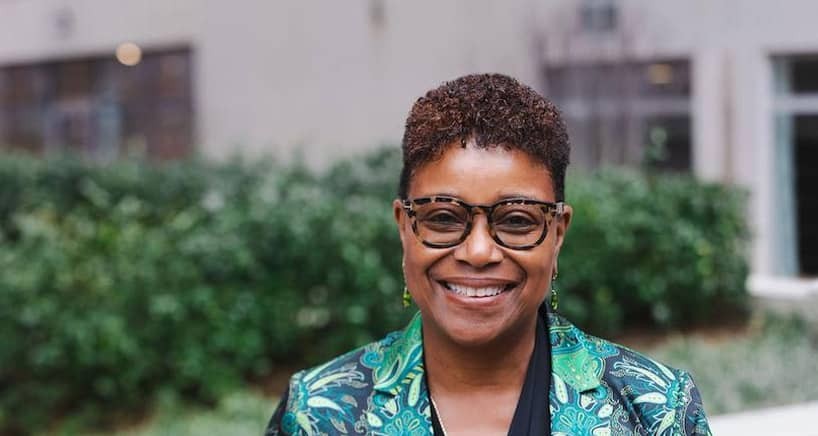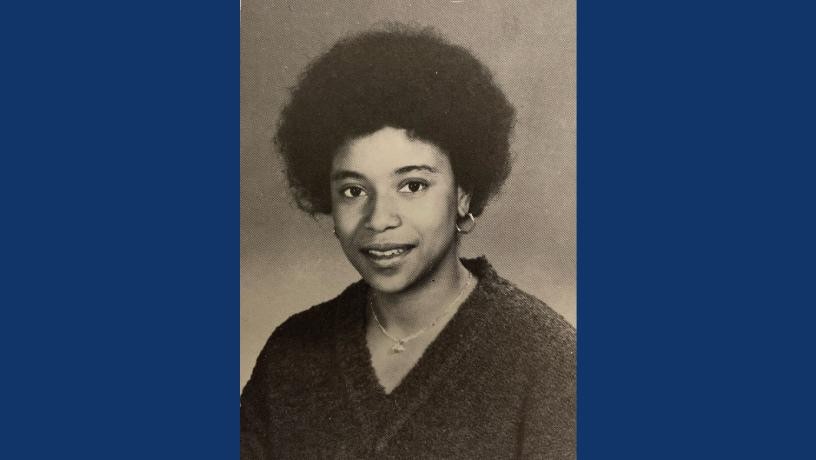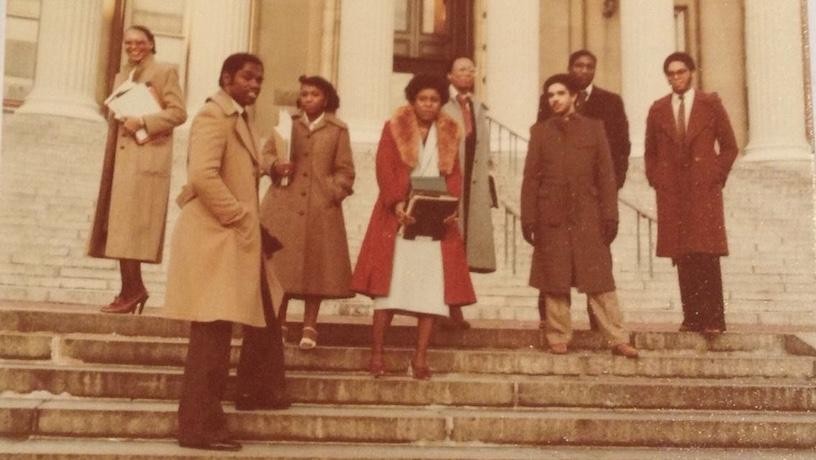A Technical Leader and Social Pioneer

Daneen Cooper (BSEE’80) overcame enormous challenges to lead IT at a Fortune 100 company — and to make it easier for those who followed.
When Daneen Cooper BSEE’80 joined the newly formed information technology division at UPS in 1986, the company’s drivers still tracked their deliveries with pen and paper.
As director of wireless technology at UPS — a position she was appointed to a few years later — Cooper was instrumental in one of the biggest technological transitions in the company’s history.
“We went from the manual clipboard to the handheld device,” said Cooper, who was based at UPS in New Jersey. “It was probably the most fun I’ve had in my career because wireless was very bleeding-edge back then. Everything was new and dynamic.”
Cooper helped lead a team that chose the technologies, designed the hardware, developed the software, and negotiated novel deals with cell carriers to create a system that supported the company’s fleet of more than 60,000 delivery trucks at that time across the country.
Overcoming challenges

Cooper grew up on Long Island and studied electronics at a technical high school. During her junior year, Cooper was awarded a full-ride scholarship from the Bell Laboratories Engineering Scholarship Program, which funded the education of many minority students who studied at Columbia Engineering during that time.
Cooper said her time at Columbia Engineering prepared her for the intellectual and social challenges she would confront as a Black woman in engineering.
“After graduating from Columbia, I don’t think I was ever confronted with anything I couldn’t work through or figure out,” she said.
When she arrived on campus in the fall of 1976, it didn’t take long for her to see that her college experience was going to be a challenge.
Less than a decade earlier, Harlem residents and hundreds of Columbia students had marched on campus and occupied University buildings to protest the University’s plan to build a gym in Morningside Park that many Harlem residents criticized.
While Black Americans had won several legislative victories during the 1960s, Cooper’s experience demonstrates that the Civil Rights Era had only begun to address racism.
“There were a lot more African American students than there would have been before the riots in 1968, but it was interesting because I was an engineering female.”
At the time, there were few women on campus. Columbia Engineering began admitting women during WWII in an effort to replace the engineers who were serving in the military. Columbia College wouldn’t admit its first women until 1983, after Cooper had graduated. Today, women account for 46% of the Columbia Engineering undergraduate student body.
Housing was one significant challenge then. Cooper had requested a Black roommate, but when she got to her room in Carmen Hall and met her three roommates, none of them were Black.
“I went to housing and they told me that I was the only Black female in my class,” she said. “I hadn’t been aware of that.”
Without enough women engineering students to fill a floor, Columbia put women engineering students on different floors across several dormitories, Cooper recalls. “That was a challenge, trying to navigate that initially. After a while, you just kind of get used to it.”
At Columbia and in her professional career, Cooper has encountered situations that would remind her she was in a small minority.
“I was always used to being one of the only females. You get to a point where that doesn't bother you,” she said. “You're the only Black person and the only female. You just do what you do, and you really don't pay attention to that. It becomes someone else's problem, not yours.”
The power of community

As a Bell scholar, Cooper worked at Bell Labs during the summer, starting right after she graduated high school. She met about a dozen other students who formed a close community that would be a strong pillar of support, particularly as she made the transition to college.
As a first-year student, Cooper recalls finding plenty of people to study with. In the much smaller classes students took during their junior and senior years, finding those groups could be challenging. This was especially true for Cooper because she went home on the weekends to care for her younger brother.
“What actually got me through were the older students who had also been electrical engineering majors,” she said. “They gave me their old homeworks, exams, and lab reports because I didn't have a study group — it was just me.”
The older students also provided Cooper a supportive community to overcome challenges she faced as a Black woman.
“Every year I had some situation with a professor or class that happened because I was a person of color,” she said. “What helped me was the fact that I had the guys who were ahead of me — my big brothers. One of them is my husband now.”
The students realized that other Black students would benefit from the same kind of support, so they worked to establish Columbia’s chapter of the National Society of Black Engineers (NSBE). In 1978, Cooper and her peers held their first official NSBE chapter meeting at Columbia. She would serve as the organization’s third president.
“We wanted to put something together where folks could sit down and talk through their experiences,” Cooper said. “If you had a student who was in need, they could come and talk to someone who understood what they were going through and could give advice or serve as a mentor.”
From the historic Bell System breakup to a company’s future tech advancement
After she graduated in 1980, Cooper joined New Jersey Bell, where she stayed for six years and rose to assistant manager. She happened to be at the company when the federal government deemed the Bell System an illegal monopoly and forced it to divide into several independent companies.
“All of a sudden, you had long distance, local service, and R&D spread across three different units.” Cooper and her colleagues across the company had to figure out how to spread responsibilities across these newly created units.
“Every single thing had to be divided,” she said. The undertaking led her to seek new opportunities that kept her at the forefront of rapidly changing technology.
That’s when she joined UPS and its new information technology division. After nearly three decades of leading transformative technical changes at UPS, Cooper retired in 2014.
Uplifting the younger generation
Today, Cooper and her husband, Maurice BS’78, volunteer their time running a track club for elementary and middle school students in their community.
“We've been doing it for 28 years now. We've traveled all over the country with these kids,” she said. “We've had kids get recruited to high schools and colleges, and we've had a couple of them make it to the Olympic trials.”
Cooper sees her volunteer work with the track club as a natural extension of her leadership in NSBE and her work supporting people of color in the organizations where she’s worked.
“It's not just about track,” she said. “It’s about giving kids a place to go and to feel worthy.”
“I've always been raised to feel fortunate to have what we have,” she added. “We didn't get anywhere on our own. So many people paid dues for me … It's incumbent upon me to give back and make it easier for someone else.”